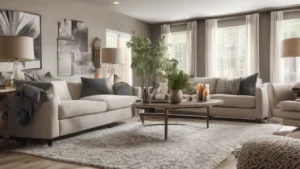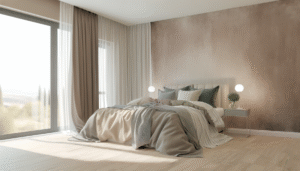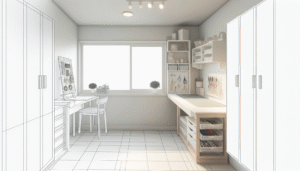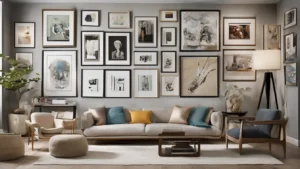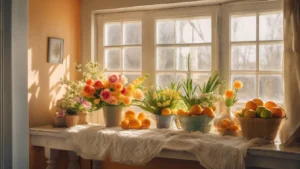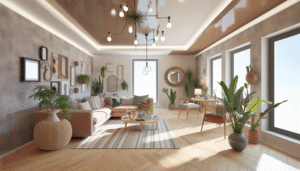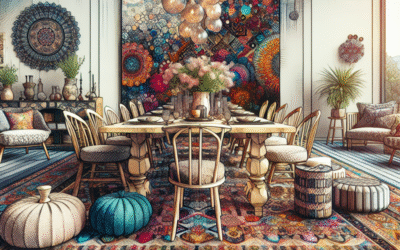
Is your child’s room feeling a little… flat? Are you tired of the same old superheroes or princess themes? Imagine the sparkle in their eyes as they step into a world teeming with playful dolphins, shimmering mermaids, majestic whales, and colorful coral reefs. Creating an enchanting bedroom for your little one can be a truly rewarding experience, and few themes capture the imagination quite like under the sea kids room decor. This isn’t just about paint and posters; it’s about crafting an immersive environment where bedtime stories come alive and playtime adventures are limitless.
This comprehensive guide will navigate you through every wave and current of designing the ultimate oceanic sanctuary. We’ll cover everything from choosing the perfect color palette to selecting safe, durable furniture and adding those magical finishing touches. You’ll learn how to transform a mundane space into a vibrant, imaginative underwater realm that fosters creativity, wonder, and restful sleep. Get ready to explore a treasure trove of ideas, practical tips, and expert advice to make your child’s under the sea room decor dreams a reality. Let’s make a splash!
In this deep dive, you’ll discover:
- Why an under the sea theme is perfect for kids’ rooms.
- Inspiration for various oceanic aesthetics, from whimsical to realistic.
- Essential elements for bringing your design to life.
- Clever DIY projects to add a personalized touch.
- Budget-friendly strategies for stunning results.
- Safety considerations and long-term adaptability.
- Answers to your most bubbling questions about creating this magical space.
Why Dive Into an Under The Sea Theme for Kids?
The ocean holds an almost universal allure, a sense of mystery and wonder that captivates children and adults alike. For kids, an under the sea room offers more than just a visually appealing space; it provides a stimulating environment ripe for exploration and growth.
Fostering Imagination and Creativity
Think about it: a room filled with coral walls, friendly sea creatures, and perhaps a ‘porthole’ window. This setting naturally invites imaginative play. Your child isn’t just in their bedroom; they’re an intrepid explorer, a graceful mermaid, or a brave captain. These scenarios help develop storytelling skills, encourage problem-solving, and broaden their creative horizons. Playing in an imaginative environment can significantly boost cognitive development.
Calming and Serene Atmosphere
The colors often associated with aquatic themes – blues, greens, whites – are inherently calming. They evoke a sense of tranquility, much like gazing at the ocean itself. This calming effect is invaluable in a child’s bedroom, a place where they need to wind down and feel secure. A well-designed under the sea space can promote better sleep and create a peaceful retreat from the day’s excitement.
Educational Opportunities Galore
Beyond aesthetics, this theme offers a fantastic educational springboard. Introduce your child to different marine animals, discuss ocean ecosystems, or even talk about environmental conservation. Posters of various fish species, books about ocean life, or even a globe showing the world’s oceans can seamlessly blend learning with daily life. It’s a subtle way to spark curiosity about the natural world.
Versatility Across Age Groups
Unlike some highly specific themes, under the sea decor is incredibly versatile. A whimsical, cartoonish approach appeals wonderfully to toddlers and preschoolers. As your child grows, the theme can evolve. Replace cartoon fish with realistic marine life posters, add more sophisticated textiles, or integrate elements like shell collections for an older child’s more mature taste. The core theme remains enchanting, adapting to different stages of childhood.
Charting Your Course: Choosing Your Under The Sea Aesthetic
The “under the sea” theme isn’t a one-size-fits-all concept. It offers a spectrum of styles, from playfully animated to subtly sophisticated. Deciding on your desired aesthetic early will guide all your subsequent choices, from paint colors to accessory selections.
Whimsical & Playful: Cartoon Ocean Adventures
This style is perfect for younger children (toddlers to early elementary). It’s characterized by bright, cheerful colors, exaggerated features, and often cartoon-like representations of sea creatures. Think friendly dolphins smiling, wide-eyed fish, and bubbly octopuses. This aesthetic prioritizes fun and joy.
- Color Palette: Vibrant blues, teals, lime greens, sunny yellows, coral pinks, and orange accents.
- Key Elements: Cartoon character wall decals (Nemo, Dory, Little Mermaid), soft plush sea animal toys, bubble motifs, playful patterns.
- Furniture: Brightly painted furniture, perhaps a boat-shaped bed or a quirky chest of drawers.
- Example: A room with a mural depicting a scene from “The Little Mermaid” or “Finding Nemo,” complete with character bedding and soft, rounded elements.
Realistic & Educational: Deep Sea Discovery
For children who love learning about nature or have a fascination with marine biology, a more realistic approach might be more engaging. This style uses authentic representations of ocean life and aims to create a sense of awe and discovery. It often features deeper, more muted shades inspired by actual ocean depths.
- Color Palette: Deep ocean blues, navy, seafoam green, sandy beige, silver-grays, and rich coral hues.
- Key Elements: High-quality prints of marine animals (whales, sharks, jellyfish), educational posters of coral reefs, nautical charts, genuine shell collections.
- Furniture: Natural wood tones, perhaps a dark blue desk, or a sturdy bunk bed that evokes a ship’s cabin.
- Example: A room with a large, realistic whale decal on one wall, a shelf displaying interesting shells and rocks, and a telescope for star-gazing (or pretending to be on a ship). A site like Ocean Conservancy can inspire factual elements.
Mermaid & Mythical: Enchanted Underwater Kingdom
This aesthetic taps into the magical and fantastical elements of the ocean, often incorporating mermaids, sea dragons, sirens, and other mythical creatures. It’s dreamy, elegant, and can be quite sophisticated, appealing to children who love fantasy and sparkle. This style often uses iridescent and shimmering textures.
- Color Palette: Pearlescent whites, shimmering aquas, lavender, rose gold, silver, and deep turquoise.
- Key Elements: Mermaid tail blankets, iridescent fabrics, seashell accessories, glittering wall art, string lights shaped like pearls or bubbles, scale patterns.
- Furniture: White or pastel-painted furniture, a canopy bed that mimics flowing seaweed, vanity tables with shell-shaped mirrors.
- Example: A room with walls painted in a soft, ethereal aqua, a canopy bed draped with shimmering fabric, a shell-shaped reading nook, and delicate string lights.
Nautical & Coastal: Beach House Vibe (with an underwater twist)
While distinct from a purely “under the sea” theme, integrating nautical or coastal elements can create a beautiful blend, especially if you desire a slightly more classic and enduring look. This focuses on elements found near or on the water, rather than solely beneath it.
- Color Palette: Crisp whites, navy blues, light grays, sandy beiges, and hints of red or yellow.
- Key Elements: Rope accents, anchors, lighthouses, ship wheels, stripes, weathered wood, seashells, sand-filled jars, model boats.
- Furniture: White distressed furniture, natural wood, bunk beds reminiscent of ship berths, wicker chairs.
- Example: A room with striped bedding, a ship wheel mounted on the wall, and jars filled with sand and shells found during beach trips, with subtle fish motifs in artwork.
Take time to discuss these options with your child. Their input is crucial! After all, this is their sanctuary, and their enthusiasm will make the project even more rewarding. Once you’ve anchored your aesthetic, the fun truly begins.
Essential Elements for Under The Sea Kids Room Decor
With your chosen aesthetic in mind, it’s time to gather the essential ingredients for your underwater masterpiece. Each element plays a crucial role in bringing the theme to life, from the largest furniture pieces to the smallest decorative accents.
Color Palette: Painting the Ocean Deep
The right colors instantly transport you to another world. Opt for shades that evoke water, sand, and marine life.
- Blues: From pale sky blue to deep navy, these are your foundational colors. Consider a gradient (ombred) wall to mimic depth.
- Greens: Seafoam, teal, and aqua greens add vibrancy and suggest seaweed or coral.
- Neutrals: Sandy beige, soft grays, and crisp whites provide balance and represent ocean floors or beach tones.
- Accent Colors: Coral, orange, yellow, and vibrant pinks can be used sparingly to highlight playful fish, coral, or mermaid tails.
Tip: Test paint swatches on the wall first. Lighting can dramatically change how colors appear. Consider painting the ceiling a slightly lighter blue or white to mimic the surface of the water or the sky above.
Walls: Canvas of the Ocean
The walls are your largest surface and offer incredible potential for transformation.
- Murals: A hand-painted mural of a coral reef, a shipwreck, or a mermaid’s grotto is a showstopper. If professional painting isn’t an option, consider large wall decals or wallpaper murals.
- Wallpapers: Look for wallpapers with subtle wave patterns, fish motifs, or abstract aquatic designs. Peel-and-stick options are great for renters or growing kids.
- Decals: Easy to apply and remove, decals are perfect for adding schools of fish, individual sea creatures, bubbles, or even custom names in an ocean font.
- Textured Walls: Sponged paint effects can create a water-like texture, or consider adding subtle glitter paint for a shimmering effect.
Image Suggestion: A split image showing a plain wall transitioning to a wall with a vibrant underwater mural.
Furniture: Anchoring Your Design
Choose practical, durable furniture that either blends seamlessly or enhances the theme.
- Bed: A twin or bunk bed can become a “ship,” “submarine,” or a “mermaid’s clam shell” with the right bedding and accessories. Look for beds with storage to keep clutter at bay.
- Storage: Chests of drawers or toy boxes can be painted to resemble treasure chests or decorated with nautical elements. Open shelving can display ocean-themed books and trinkets.
- Desk/Study Area: Keep this functional. A simple white or light wood desk can be accessorized with ocean-themed desk organizers or a fish lamp.
- Seating: A beanbag in a sea creature shape, a small whimsical armchair, or even floor cushions designed like coral can add comfort and charm.
Actionable Insight: Consider upcycling existing furniture with a fresh coat of paint and some themed hardware (e.g., shell-shaped knobs or rope handles).
Lighting: Creating Underwater Ambiance
Lighting is key to setting the mood and creating that magical underwater glow.
- Ambient Lighting: A jellyfish-shaped pendant light, a shell chandelier, or a light fixture with subtle wave patterns can be a focal point.
- Accent Lighting: String lights (LED options are safest and energy-efficient) can be draped around a bed canopy or a headboard. Look for lights shaped like starfish, bubbles, or tiny fish.
- Nightlights & Projectors: A turtle or wave projector that casts moving ocean patterns onto the ceiling and walls is incredibly effective and calming for bedtime.
- Natural Light: Embrace natural light with sheer curtains in blue or green to let in filtered light, reminiscent of light passing through water.
Tool Recommendation: BlissLights SkyLite 2.0 (for stunning nebula/star/ocean ripple effects) or a simpler turtle night light projector for younger kids.
Textiles: Draping the Ocean Floor
Bedding, curtains, and rugs add texture, color, and comfort, tying the theme together.
- Bedding: Look for duvet covers and sheet sets featuring mermaids, fish, sharks, or abstract wave patterns. Complement with throw pillows shaped like starfish or seashells.
- Curtains: Sheer blue or green curtains, curtains with subtle ocean prints, or even custom-made curtains with appliqued sea creatures.
- Rugs: A deep blue rug to mimic the ocean depths, a sand-colored rug, or even a rug shaped like a seashell or a coral reef can define the space and add softness.
- Blankets: Mermaid tail blankets or plush throws with sea animal designs are cozy additions.
Consider: Layering textiles. A textured blue bedspread with a lighter, patterned throw and a couple of themed pillows adds depth and visual interest.
Decorations & Accessories: The Finishing Touches
These are the details that truly make the room unique and personal.
- Wall Art: Framed prints of sea creatures, abstract ocean paintings, or even your child’s own artwork of fish and mermaids.
- Shelving: Display collections of shells, sand dollars, glass floats, model ships, or small figurines of marine life.
- Hanging Decorations: Mobiles with fish or seashells, paper lanterns, or DIY jellyfish made from paper plates and streamers.
- Mirrors: A mirror framed with seashells or driftwood, or a round mirror resembling a porthole.
- Greenery: Artificial (or real, if child-safe) plants that mimic seaweed or underwater flora.
- Toys: Incorporate sea-themed toys, cuddly marine animal plushies, or a small fish tank (if manageable and budget allows!).
Actionable Insight: Involve your child in selecting some of these smaller items. It gives them ownership and excitement for their new room.
By thoughtfully combining these elements, you’re not just decorating a room; you’re constructing an entire underwater narrative. Each piece contributes to the immersive fantasy, making bedtime and playtime an adventure.
DIY Ocean Magic: Creative Projects for Under The Sea Kids Room Decor
Adding personal, handmade touches can elevate your under the sea theme from mass-produced to truly unique. DIY projects are not only budget-friendly but also offer a wonderful opportunity for you and your child to bond over the creation of their special space.
DIY Jellyfish Lanterns
These are surprisingly easy to make and create a magical, whimsical ambiance.
- Materials: Paper lanterns (white or clear), various ribbons or fabric strips (iridescent, blue, green, silver), hot glue gun, fishing line.
- Instructions: Open the paper lantern. Cut ribbons/fabric strips into varying lengths (1-3 feet). Hot glue the ribbons around the bottom rim of the lantern, letting them hang down like tentacles. You can also add some sheer fabric scraps for extra volume. Hang with fishing line from the ceiling at varying heights. For added glow, insert a battery-operated LED light inside.
Pro Tip: Use ribbons with different textures – satin, sheer, glitter – for a more interesting effect.
Seashell Shadow Box or Mobile
Perfect for displaying beach treasures or creating delicate hanging art.
- Materials: Shadow box frame OR a stick/driftwood branch, various seashells, strong glue (e.g., E6000), fishing line, small drill bit (for mobile).
- Instructions for Shadow Box: Arrange shells artfully inside the shadow box. Glue them securely to the backboard or to each other. You can add a sandy background with craft sand or a watercolor wash.
- Instructions for Mobile: Carefully drill small holes in the larger shells (or tie fishing line around smaller ones). Attach fishing line to each shell, then tie them to the driftwood branch at varying lengths. Hang the branch horizontally.
Image Suggestion: A close-up of a neatly arranged seashell shadow box.
Painted Oar or Buoy Decor
Adds a touch of nautical charm and encourages storytelling.
- Materials: Old wooden oar or decorative buoy (can be found at craft stores or thrift shops), acrylic paints (blue, white, red, distressed colors), sandpaper, clear sealant.
- Instructions: Lightly sand the oar/buoy. Paint in desired nautical colors (e.g., navy and white stripes, or a distressed teal). You can stencil on anchors, compass roses, or even your child’s initial. Once dry, apply a clear sealant for protection. Hang on a prominent wall.
Creative Spin: Paint the oar with a ‘mermaid scale’ pattern using a stencil and iridescent paint.
“Under the Sea” Sensory Bin/Table
This isn’t decor for the walls, but it’s an interactive decor piece that fosters imaginative play and sensory development.
- Base: A large plastic bin or a dedicated sensory table.
- Fillers: Blue dyed rice or pasta, kinetic sand, water beads (ensure child-safe and supervised), small pebbles, blue cellophane strips.
- Treasures: Small plastic sea creatures, plastic shells, smooth glass gems, small fishing net, toy boat, plastic scoops, small buckets.
- Setup: Arrange fillers and treasures in the bin. Encourage open-ended play. It can be a temporary display or a permanent play zone.
Safety Note: Always supervise young children with small items to prevent choking hazards. Consider larger items for toddlers.
DIY Porthole Mirror or Window
Transform a simple mirror or frame into a submarine or ship porthole view.
- Materials for Mirror: Round mirror, thick rope, hot glue gun, small compass or ship’s wheel accent.
- Instructions: Hot glue the rope around the edge of the mirror to create a thick frame. You can add a small compass or ship’s wheel at the bottom.
- Materials for Window: Square or rectangular picture frame, ocean print (e.g., a photo of clear blue water, a scene of fish swimming), thin strips of wood or cardboard, paint.
- Instructions: Place the ocean print inside the frame. Cut thin strips of wood or cardboard to create a grid (like a ship’s window pane). Paint them black or dark brown. Glue them strategically onto the glass or acrylic front of the frame.
These DIY projects infuse personality and genuine charm into your under the sea kids room decor, making it truly one-of-a-kind. Plus, the process of creating them can be just as fun as the finished product!
Budgeting for Your Ocean Oasis: Smart Saving Strategies
Creating a breathtaking under the sea room doesn’t have to break the bank. With a little creativity and strategic planning, you can achieve stunning results without overspending. The trick is to prioritize where to splurge and where to save.
Prioritize Big Impact, Low Cost
Focus on elements that offer the most visual transformation for the least amount of money.
- Paint Power: A fresh coat of paint in ocean hues is one of the most cost-effective ways to set the theme. Consider a simple two-tone wall or an accent wall with a sponged water effect rather than a complex mural.
- Wall Decals & Posters: Large, high-quality wall decals or framed posters of aquatic scenes can provide significant visual impact without the expense of hand-painted art.
- Thrift Store Finds: Hunt for furniture pieces that can be upcycled. A plain dresser can become a “treasure chest” with paint and new hardware. Old picture frames can be repurposed for ocean art.
Embrace DIY for Personalization and Savings
As explored in the previous section, DIY projects are your best friend for budget decorating.
- Handmade Decorations: Jellyfish lanterns, seashell mobiles, and painted oars are all examples of impactful decor that cost very little in materials.
- DIY Wall Art: Print ocean images found online (ensure they are copyright-free for personal use), frame them, or let your child create their own sea creature drawings.
- Fabric Fun: Transform inexpensive blue or green fabric into curtains, pillow covers, or a bed skirt with basic sewing skills (or no-sew tape!).
Tool Recommendation: A good pair of fabric scissors, a hot glue gun, and a basic sewing kit are invaluable for DIY projects.
Smart Shopping & Sales Hunting
Timing your purchases and knowing where to look can yield significant savings.
- Post-Holiday Sales: Look for blue/green/nautical items after summer or around major holidays when stores clearance out seasonal decor.
- Online Marketplaces: Check Facebook Marketplace, Craigslist, or local buy-sell-trade groups for gently used furniture or decor items.
- Dollar Stores & Craft Stores: Excellent for small decorative items like plastic sea creatures, craft supplies, affordable picture frames, or plain storage bins to customize.
- Secondhand Shops: In addition to furniture, you might find unique shell collections, old maps, or vintage nautical trinkets.
Actionable Insight: Create a detailed budget spreadsheet. List every item you need and its estimated cost. This helps you track spending and identify areas where you can cut back.
Borrow, Repurpose, or Simplify
Sometimes, the best solution is to use what you already have or simplify your vision.
- Repurpose Existing Items: Can a plain white chest of drawers be painted blue and given shell-shaped handles? Can existing lamps get new ocean-themed shades?
- Borrow: Do friends or family have any suitable items they’re willing to lend or give away?
- Simplify Design: Instead of elaborate murals, opt for a painted accent wall and focus on strategic placement of key decor items. A simpler design can often be more elegant and timeless anyway.
Case Study: The “Porthole” Window Hack
One family wanted a porthole window but couldn’t afford a custom build. They bought a large, round mirror from a discount store, applied a thick rope trim with hot glue, and positioned it strategically on a blue accent wall. For under $30, they achieved the desired effect, demonstrating how clever hacks can replace expensive custom work in under the sea kids room decor.
By blending DIY creativity with savvy shopping, you can create a truly spectacular under the sea room that both you and your child will adore, all while keeping your budget happily afloat.
Safety First: Navigating Your Under The Sea Design Safely
While creating a magical room is exciting, your child’s safety must always be the top priority. From furniture choices to small decorative items, every decision should factor in potential hazards, especially for younger children.
Furniture Stability and Placement
- Anchor Heavy Furniture: Dressers, bookshelves, and other tall furniture pose a tip-over risk. Use anchor kits (typically included with furniture or sold separately) to secure them to the wall. This is a non-negotiable step, as furniture tip-overs can cause serious injury.
- Rounded Edges: Whenever possible, opt for furniture with rounded edges to prevent bumps and scrapes during play. If sharp corners are unavoidable, consider child-proofing corner guards.
- Safe Bed Placement: Ensure the bed isn’t directly under a window with long cords, or too close to outlets. If using bunk beds, always follow manufacturer safety guidelines, including minimum age recommendations for the top bunk.
Internal Link: For more detailed safety information, refer to our guide on Ultimate Child-Proofing Guide.
Beware of Choking Hazards
This is critically important for babies and toddlers who tend to explore with their mouths.
- Small Decorations: Seashells, small plastic sea creatures, glass gems, and beads are charming but are serious choking hazards. Keep them out of reach or avoid them entirely for very young children.
- Mobiles & Hanging Items: Ensure mobiles are securely attached and positioned well above a crib, out of reach of a curious infant. As soon as a baby can pull themselves up, remove mobiles.
- Toy Storage: If using a sensory bin (as discussed in DIY section), ensure all small items are removed immediately after play, or use age-appropriate large items only, with constant supervision.
Actionable Insight: Conduct a “crawl test.” Get down on your hands and knees and crawl around the room from a child’s perspective. You’ll often spot hazards you missed from an adult’s height.
Cord Management and Electrical Safety
- Window Blind Cords: Opt for cordless blinds or shades. If existing blinds have cords, install cord shorteners or safety cleats to keep them out of reach. Long, dangling cords are a strangulation hazard.
- Electrical Cords: Secure all lamp cords, device chargers, and other electrical wires to the wall or floor using cord covers or clips. Keep them out of sight and out of reach.
- Outlet Covers: Install safety caps or child-proof covers on all unused electrical outlets.
Material Choices and Air Quality
- Low-VOC Paints: When painting, choose low-VOC (Volatile Organic Compound) or zero-VOC paints to minimize harmful fumes and improve indoor air quality.
- Non-Toxic Materials: For DIY projects, ensure glues, sealants, and craft supplies are non-toxic and child-safe.
- Allergies: If your child has allergies, consider hypoallergenic bedding and materials. Regularly clean soft furnishings to minimize dust mites.
Long-Term Adaptability: Growing with the Current
Kids grow fast! Designing a room that can adapt as your child matures is a smart move, saving you time and money in the long run.
- Timeless Base: Start with a relatively neutral or classic color palette for walls (e.g., a soft blue or aqua). You can always add bolder accents later.
- Modular Furniture: Choose furniture pieces that can serve different functions over time. A changing table that converts into a dresser, or a crib that transitions to a toddler bed and then a full-sized bed.
- Removable Decor: Rely heavily on easily changeable elements like wall decals, bedding, framed prints, and accessories. These can be updated without a complete room overhaul. For instance, replace whimsical fish decals with more realistic nautical charts as they age.
- Open Shelving: Allows you to easily swap out displayed items – from colorful toys to books about oceanography or travel souvenirs.
Comparison: Permanent vs. Adaptable Decor
| Element | Permanent (Less Adaptable) | Adaptable (Grow with Child) |
|---|---|---|
| Walls | Elaborate, highly detailed mural | Solid color or subtle wave wallpaper, large decals |
| Bed | Custom-built boat or castle bed | Classic twin bed with themed bedding/headboard |
| Decor | Expensive custom art, fixed installations | Framed prints, changeable textiles, DIY projects |
| Cost | Higher initial cost, higher refresh cost | Lower initial cost, lower refresh cost |
By keeping both safety and adaptability at the forefront of your design process, you’ll create an under the sea kids room decor that is not only enchanting but also secure and sustainable for years to come.
FAQs: Your Bubbling Questions About Under The Sea Rooms Answered
Here are some of the most frequently asked questions about designing an under the sea themed room for kids, offering quick, actionable answers.
What age is an under the sea theme best for?
An under the sea theme is incredibly versatile and works well for all ages, from nursery to pre-teen. For babies and toddlers, opt for soft, whimsical elements and gentle colors. For older children, you can incorporate more realistic oceanic imagery, nautical details, and educational aspects, evolving the theme as their interests grow. The key is in selecting the specific aesthetic.
How do I make the room feel “underwater” without making it too dark?
Achieve an underwater feel using lighter shades of blue and green, like sky blue, seafoam green, or pale aqua. Combine these with white or sandy beige accents to keep the room bright. Incorporate plenty of white furniture and sheer curtains. Strategic lighting, such as warm string lights or a wave projector, can add ambiance without darkening the space.
What’s the easiest way to add an ocean theme without repainting walls?
If painting isn’t an option, focus on textiles and accessories. Use ocean-themed bedding, curtains, and rugs. Large wall decals are excellent for adding impactful imagery without permanent changes. Hang framed prints of marine life, display shell collections, and use blue/green accent pillows and throws. Lighting, like a water ripple projector, can also transform the atmosphere instantly.
Are fish tanks a good idea in an under the sea themed room?
Fish tanks can be a beautiful and educational addition, enhancing the theme’s realism. However, they require significant commitment in terms of cleaning, maintenance, and proper setup for the fish’s well-being. Consider your child’s age, your willingness to maintain it, and potential safety concerns (e.g., tipping, water spills, electrical cords). A “no-maintenance” projector or realistic plastic fish might be a better alternative for some families.
How can I incorporate mermaids into the decor without it being overly “girly”?
Focus on the mystical and graceful aspects of mermaids rather than overt pinks or glitter. Use iridescent or pearl-toned fabrics, subtle scale patterns, and colors like deep aqua, lavender, or silver. Combine mermaid illustrations with other sea creatures like dolphins or sea turtles. Emphasize the wonder and strength of the ocean rather than strict gender stereotypes.
What type of flooring works best with an under the sea theme?
Light-colored carpet or rugs in shades of sand, light blue, or even a deep blue to mimic the ocean floor works well. For hard floors, light wood or a white wash finish can represent a beach house aesthetic, while a blue or grey distressed look can evoke deep sea. Area rugs are excellent for defining zones and adding comfort.
Conclusion: Making Waves in Your Child’s Imagination
Transforming a child’s room into an under the sea oasis is more than just a decorating project; it’s an investment in their imagination, comfort, and sense of wonder. We’ve explored everything from selecting the perfect aesthetic – be it whimsical, realistic, or mythical – to essential elements like color palettes, furniture, and lighting. You’ve discovered how DIY magic can add personal touches, how smart budgeting keeps costs afloat, and critically, how to ensure your child’s ocean sanctuary is a safe haven for exploration and restful sleep.
Remember that the most enchanting under the sea kids room decor is one that reflects your child’s unique personality and sparks their creativity. Involve them in the process, let their ideas bubble to the surface, and together, you’ll create a space where dreams are as vast and deep as the ocean itself. Now, go forth and make a splash – your own beautiful underwater world awaits!
Ready to Explore More?
- DIY Kids Bedroom Ideas: Unleash Their Potential
- Nursery Design for New Parents: Creating a Calming Space
Content Disclaimer
The information provided in this article regarding under the sea kids room decor is for general informational and educational purposes only. While we strive to provide accurate and helpful advice, it is not intended to be a substitute for professional design consultation or safety guidance from certified experts. Always exercise caution and prioritize safety, especially when dealing with children’s rooms, furniture installation, and toy selections. Specific product recommendations are given as examples and not as endorsements; always conduct your own research to ensure products meet your individual needs and safety standards. Results and experiences may vary.
Categories
- Accent Walls & Ceilings (61)
- Art Curation & Gallery (62)
- Bedding Style Trends (68)
- Bedroom Makeover (81)
- Bohemian & Eclectic Styles (58)
- DIY & Budget-Friendly Decor (64)
- Eco-Friendly Design (62)
- Furniture Care (71)
- Home Decor & Design Ideas (162)
- Home Wellness Spaces (59)
- Integrated Outdoor Living (67)
- Japandi Style (61)
- Kids and Nursery Decor (59)
- Living Room Decor (79)
- Mix & Match Techniques (73)
- Modern & Contemporary Design (66)
- Rug Sizing & Placement (73)
- Scandinavian Design Inspiration (20)
- Seasonal Home Decor (79)
- Small Space Solutions (73)
- Wall Art & Painting Tips (77)
Recent Comments
Archives
Product Gallery
-
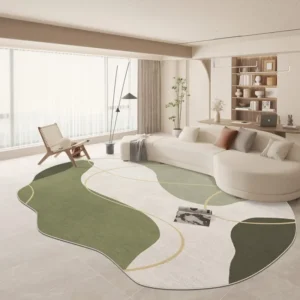 Large Area Green Rugs for Bedroom Nordic Living Room Decoration Shaped Carpet Irregular Plush Lounge Rug Home Thick Washable Mat
Rated 5.00 out of 5$54.94 – $346.41Price range: $54.94 through $346.41
Large Area Green Rugs for Bedroom Nordic Living Room Decoration Shaped Carpet Irregular Plush Lounge Rug Home Thick Washable Mat
Rated 5.00 out of 5$54.94 – $346.41Price range: $54.94 through $346.41 -
 Nordic Style Rugs for Bedroom Morandi Living Room Decoration Carpet Large Area Geometry Lounge Rug Home Cloakroom Non-slip Mat
Rated 5.00 out of 5$39.46 – $597.66Price range: $39.46 through $597.66
Nordic Style Rugs for Bedroom Morandi Living Room Decoration Carpet Large Area Geometry Lounge Rug Home Cloakroom Non-slip Mat
Rated 5.00 out of 5$39.46 – $597.66Price range: $39.46 through $597.66 -
 Irregular Shapes Living Room Decoration Carpet Modern Style Rugs for Bedroom Home Thicken Plush Rug Fluffy Soft Lounge Floor Mat
Rated 4.83 out of 5$55.91 – $347.82Price range: $55.91 through $347.82
Irregular Shapes Living Room Decoration Carpet Modern Style Rugs for Bedroom Home Thicken Plush Rug Fluffy Soft Lounge Floor Mat
Rated 4.83 out of 5$55.91 – $347.82Price range: $55.91 through $347.82

